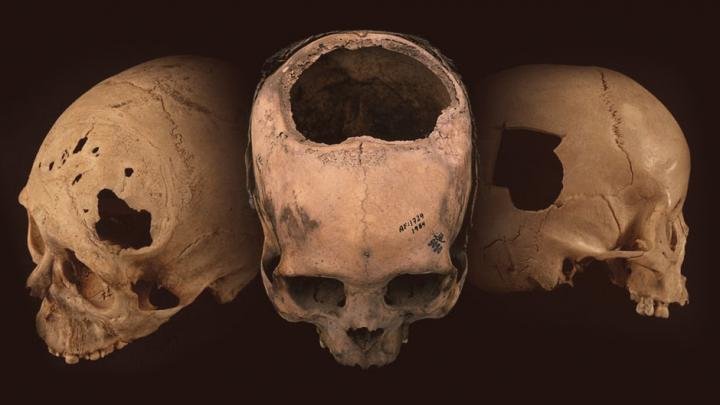With the modern-day commercialization of medical science, we need to be reminded of this great ancient surgeon who, despite his unbound successes, maintained the nobility of his profession. Even with a highly skilled neurosurgeon, the most effective anesthesia, and all the other advances of modern medicine, most of us would cringe at the thought of undergoing cranial surgery today.
After all, who needs a hole in the head? Yet for thousands of years, trepanation—the act of scraping, cutting, or drilling an opening into the cranium—was practiced around the world, primarily to treat head trauma, but possibly to quell headaches, seizures and mental illnesses, or even to expel perceived demons.
According to a new study led by the University of Miami Miller School of Medicine’s David S. Kushner, M.D., clinical professor of physical medicine and rehabilitation, trepanation was so expertly practiced in ancient Peru that the survival rate for the procedure during the Incan Empire was about twice that of the American Civil War—when, more three centuries later, soldiers were trepanned presumably by better trained, educated and equipped surgeons.
But hygiene, or more accurately the lack of it during the Civil War, may have contributed to the higher mortality rates in the later time period. According to the study, which relied on Verano’s extensive field research on trepanation over a nearly 2,000-year period in Peru and a review of the scientific literature about trepanation around the world, Civil War surgeons often used unsterilized medical tools and their bare fingers to probe open cranial wounds or break up blood clots.
Whatever their methods, ancient Peruvians had plenty of practice. More than 800 prehistoric skulls with evidence of trepanation—at least one but as many as seven telltale holes—have been found in the coastal regions and the Andean highlands of Peru, the earliest dating back to about 400 B.C. That’s more than the combined total number of prehistoric trepanned skulls found in the rest of the world. Which is why Verano devoted an entire book, Holes in the Head—The Art and Archeology of Trepanation in Ancient Peru, to the 800-plus skulls, most of which were collected from burial caves and archaeological digs in the late 1800s and early 1900s and reside in museums and private collections today.
In another study Banerjee and his co-workers reported that The Golden Age of surgery in ancient India rests largely on the shoulders of Susruta, who lived sometime between 700 and 600 B.C. Susruta practiced and propagated the art of surgery at the University of Benares in that ancient city, located on the banks of the holy Ganges.
The master surgeon Susruta is said have included elementary neurosurgery in his accomplishments: “Ten nerves maintain the functions of the body by carrying impulses of sound, touch, vision, taste, smell, respiration, sighing, yawning, hunger, laughing, speech, and crying . . .”
In February, 2015, Russian scientists examined ancient human skulls and tested bronze tools on a modern skull to see how doctors in Siberia more than 2,000 years ago performed brain surgery on three adults. It is still unknown what anesthetic, if any, was used to dull the pain during the surgery.
The researchers believe the surgeries were carried out using the same principles as those found in the Hippocratic Corpus, which requires strict adherence to medical ethics and techniques. Hippocrates wrote the oath around 500 B.C.
Source: DOI: 10.1016/j.wneu.2018.03.143, DOI: 10.1016/j.wneu.2010.09.007. ancient-origins.net
